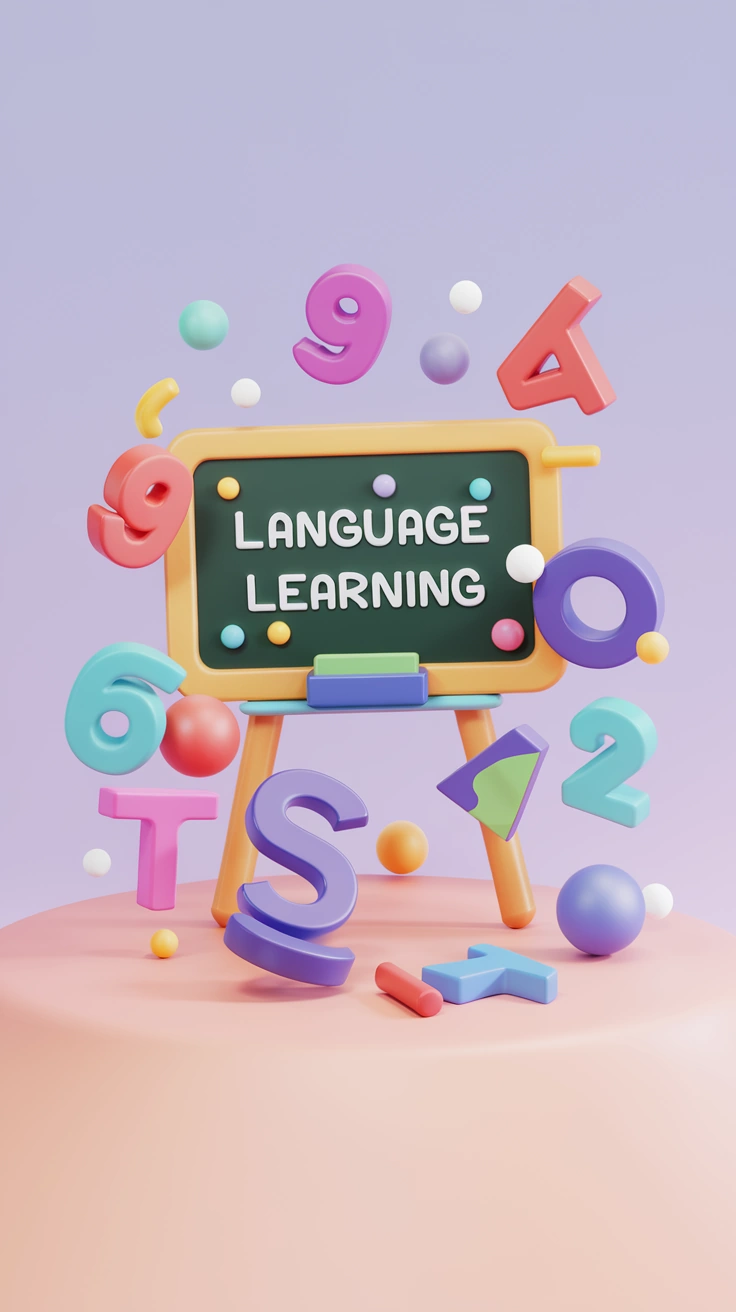About Us
Vision
Our vision is to become the go-to global resource for early childhood language education, cultivating a generation of confident, multilingual, and culturally aware young learners. Our goal is to foster a community that embraces language learning as a joyful journey that broadens perspectives, fosters connections, and equips children for a future that is brighter and more inclusive.

The Importance of Joyful and Effective Language Learning for Young Kids
Language connects us to the world, culture, and each other, not just for communication. For young children, learning a language, whether it’s their first, a second, or even a foreign one, lays the foundation for cognitive, social, and emotional development. But what makes language learning truly impactful is the approach. When language learning is joyful and effective, it becomes a transformative experience that nurtures curiosity, builds confidence, and fosters a lifelong love for learning.
Why Early Childhood is a Critical Time for Language Learning
Research consistently shows that the early years, from birth to around age 8, are a sensitive period for language acquisition. During this time, children’s brains are highly adaptable and wired to absorb new sounds, patterns, and structures. This adaptability makes early childhood an ideal time to introduce additional languages, whether it’s through bilingual education, English as a Second Language (ESL) programs, or foreign language exposure.
Early childhood is ideal for language learning for the following key reasons:
- Neuroplasticity: Young children’s brains are more flexible, allowing them to learn and differentiate between multiple languages with ease.
- Natural Imitation: Children naturally mimic sounds and words, making it easier for them to develop accurate pronunciation and intonation.
- Cultural Openness: Kids are naturally curious and open to new experiences, including the diversity that language represents.
The Role of Joy in Language Learning
Joy is a powerful motivator for young children. When kids find language learning enjoyable, they are more likely to engage, participate, and retain what they’ve learned. Joyful language learning fosters a positive emotional connection to the process, reducing stress and anxiety that can sometimes come with new challenges.
How to Infuse Joy into Language Learning:
- Play-Based Activities: Games, songs, and storytelling keep children engaged and make learning feel like fun rather than work.
- Interactive Tools: Flashcards, puppets, and digital apps designed for kids can turn language lessons into exciting adventures.
- Celebrating Small Wins: Praising progress, no matter how small, boosts confidence and reinforces a love for learning.
- Cultural Integration: Introducing elements like foreign songs, festivals, and foods associated with the language being learned makes the experience vibrant and memorable.
The Benefits of Effective Language Learning
When language learning is both joyful and effective, it brings measurable benefits across multiple domains of a child’s development.
1. Cognitive Development
- Improved Problem-Solving Skills: Learning a language teaches kids to think creatively and adapt to new contexts.
- Enhanced Memory: Memorizing vocabulary and language rules strengthens memory capacity.
- Better Multitasking: Switching between languages boosts executive function and multitasking abilities.
2. Social and Emotional Growth
- Confidence Building: Mastering new words and phrases gives children a sense of achievement.
- Cross-Cultural Understanding: Learning a foreign language fosters empathy and appreciation for diversity.
- Improved Communication: Language skills help kids express their thoughts and emotions more effectively.
3. Academic Advantages
- Stronger Literacy Skills: Early exposure to language structures supports reading and writing development.
- Higher Academic Performance: Bilingual and multilingual children often outperform their peers in problem-solving and critical thinking.
4. Future Opportunities
- Career Preparation: Bilingualism is an asset in the global job market.
- Global Citizenship: Knowing multiple languages helps kids navigate and connect in a multicultural world.
ESL and Foreign Language Learning
For children learning English as a Second Language (ESL) or a foreign language, the benefits are even more pronounced. These children often develop dual language proficiency, which opens up unique opportunities for academic success and cross-cultural connections.
Strategies for ESL Learning:
- Immersive Environments: Surround children with English in fun and interactive ways, such as storytelling and play-based lessons.
- Visual Supports: Use images, flashcards, and videos to make new words easier to understand.
- Real-Life Applications: Incorporate English into daily routines to give kids practical exposure.
Strategies for Foreign Language Learning:
- Start Early: Begin exposure to the foreign language during the critical early years.
- Interactive Methods: Use apps, songs, and games that align with the target language.
- Consistency: Create a routine where the foreign language becomes a part of daily life, such as during meals or playtime.
Challenges and How to Overcome Them
While the benefits are undeniable, language learning can present challenges, such as frustration, lack of resources, or inconsistent practice. Here’s how to tackle these:
- Make it Fun: Turn lessons into playtime with interactive activities.
- Provide Encouragement: Celebrate effort and progress, not just results.
- Use Technology: Leverage apps and online tools that offer gamified language learning experiences.
- Set Realistic Goals: Focus on gradual improvement rather than perfection.
Learning a language is more than just acquiring words; it’s about unlocking new worlds. For children, learning a new language should be a joyful journey filled with exploration, creativity, and connection. By combining effective strategies with a sense of fun and wonder, we can empower young learners to embrace the beauty of language and build skills that will serve them for a lifetime.
At Language Kids Joy, our goal is to make this journey accessible and inspiring for every parent, teacher, and child. Joyful learning transforms into an unforgettable experience.
